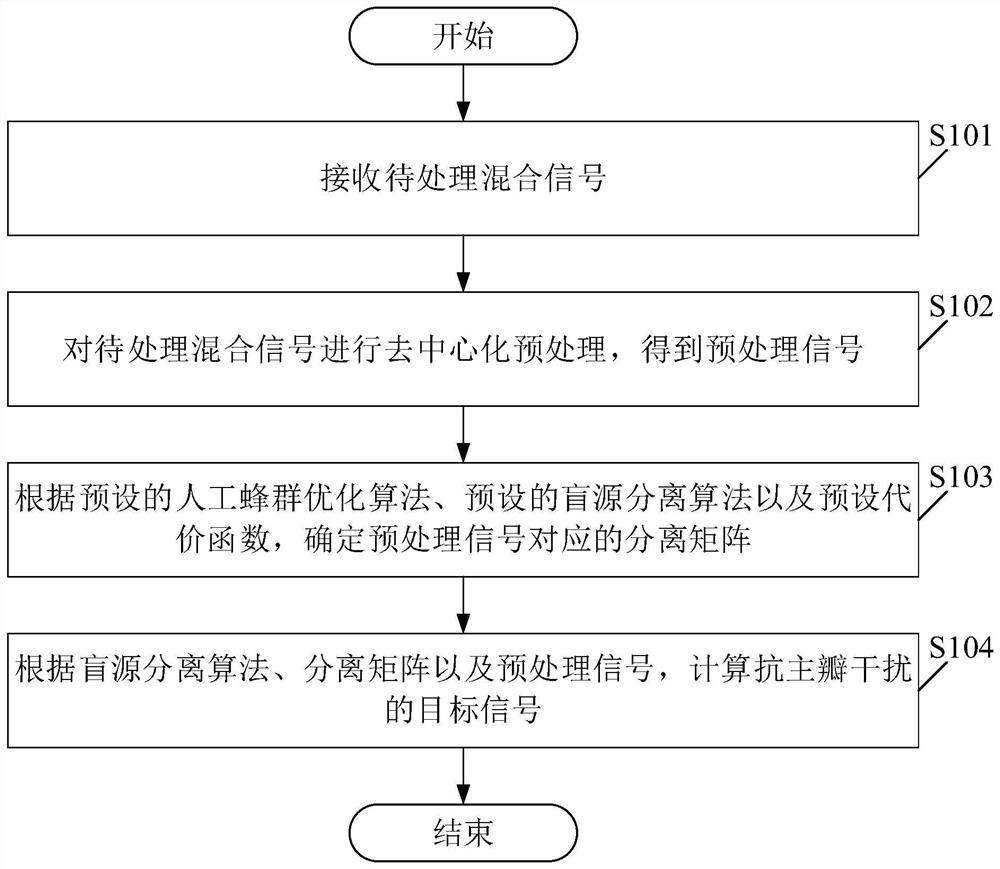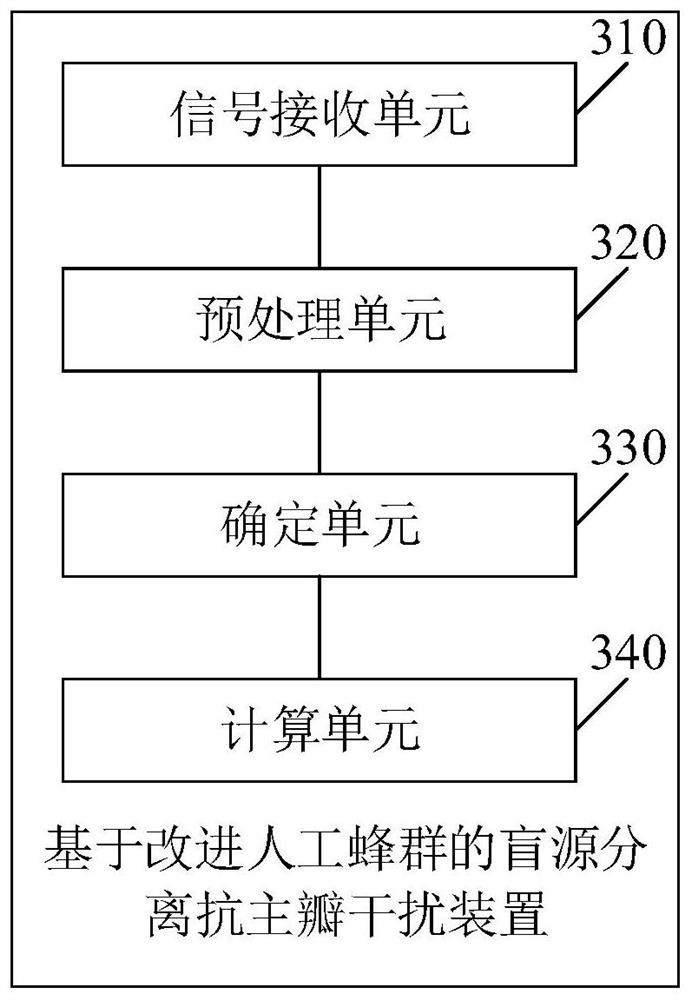Blind source separation main lobe interference resisting method and device based on improved artificial bee colony
An artificial bee colony and blind source separation technology, applied in the field of signal processing, can solve the problems of radar detection performance interference, poor main lobe interference effect, etc.
- Summary
- Abstract
- Description
- Claims
- Application Information
AI Technical Summary
Problems solved by technology
Method used
Image
Examples
Embodiment 1
[0062] Please see figure 1 , figure 1 A schematic flowchart of a blind source separation anti-mainlobe interference method based on an improved artificial bee colony is provided for the embodiment of the present application. Among them, the blind source separation anti-mainlobe interference method based on the improved artificial bee colony includes:
[0063] S101. Receive a mixed signal to be processed.
[0064] In the embodiment of the present application, the mixed signal to be processed is a signal that requires anti-mainlobe interference processing. Specifically, the mixed signal to be processed is a signal received by the array radar antenna.
[0065] S102. Perform decentralized preprocessing on the mixed signal to be processed to obtain a preprocessed signal.
[0066] S103. Determine a separation matrix corresponding to the preprocessed signal according to a preset artificial bee colony optimization algorithm, a preset blind source separation algorithm, and a preset...
Embodiment 2
[0083] Please see figure 2 , figure 2 It is a schematic flowchart of a blind source separation anti-mainlobe interference method based on an improved artificial bee colony provided by the embodiment of the present application. like figure 2 As shown, wherein, the blind source separation anti-mainlobe interference method based on the improved artificial bee colony includes:
[0084] S201. Receive a mixed signal to be processed.
[0085] S202. Perform decentralized preprocessing on the mixed signal to be processed to obtain a preprocessed signal.
[0086] S203. Initialize the preset artificial bee colony to obtain the target artificial bee colony.
[0087] In the embodiment of the present application, the artificial bee colony includes 3 types of bees, namely employed bees, follower bees and scout bees. The goal of the whole bee colony is to find the nectar source with the largest amount of nectar. The hired bees use the previous nectar source information to find new nec...
Embodiment 3
[0149] Please see image 3 , image 3 A schematic structural diagram of a blind source separation anti-mainlobe interference device based on an improved artificial bee colony provided by the embodiment of the present application. like image 3 As shown, the blind source separation anti-mainlobe interference device based on the improved artificial bee colony includes:
[0150] a signal receiving unit 310, configured to receive the mixed signal to be processed;
[0151] A preprocessing unit 320, configured to perform decentralized preprocessing on the mixed signal to be processed to obtain a preprocessed signal;
[0152] The determining unit 330 is configured to determine a separation matrix corresponding to the preprocessed signal according to a preset artificial bee colony optimization algorithm, a preset blind source separation algorithm, and a preset cost function;
[0153] The calculation unit 340 is configured to calculate the target signal against main lobe interferen...
PUM
 Login to View More
Login to View More Abstract
Description
Claims
Application Information
 Login to View More
Login to View More - R&D
- Intellectual Property
- Life Sciences
- Materials
- Tech Scout
- Unparalleled Data Quality
- Higher Quality Content
- 60% Fewer Hallucinations
Browse by: Latest US Patents, China's latest patents, Technical Efficacy Thesaurus, Application Domain, Technology Topic, Popular Technical Reports.
© 2025 PatSnap. All rights reserved.Legal|Privacy policy|Modern Slavery Act Transparency Statement|Sitemap|About US| Contact US: help@patsnap.com



